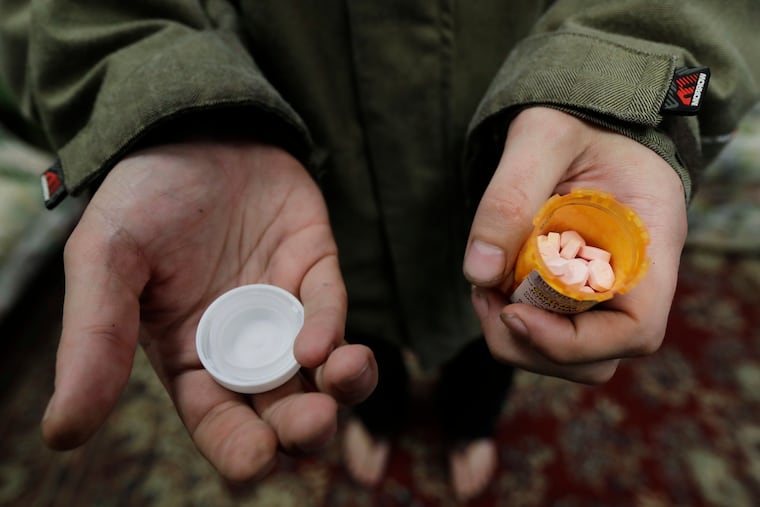The pandemic broke through opioid treatment red tape. Let’s keep it that way. | Opinion
One thing the federal government got right during the pandemic was making it easier for people to begin opioid use disorder treatment.

As fentanyl drives opioid overdose deaths ever higher in Philadelphia, the public health system needs as many tools as possible to fight back. Washington is able to offer long-term help, based on lessons learned from the pandemic, but it needs to act now.
To help limit coronavirus spread, federal regulatory agencies made a special exception to let patients start buprenorphine — one of the best ways we have to treat opioid use disorder — after a first visit using telemedicine. The rules usually require an in-person visit. Now one of these agencies says that only Congress can extend this flexibility once the public health emergency is over. As regulatory experts, we disagree. While we welcome a legislative fix, our new report finds that the agencies can go it alone to extend this lifesaving relief.
For the two million Americans battling opioid use disorder, many of whom call Philadelphia home, accessing treatment has long been a logistical nightmare. Public health advocates have documented how the system makes it hard for patients to stick with treatment. Daily, required trips to methadone clinics are a well-known example of this health-care sludge. Requiring an in-person visit before starting buprenorphine treatment is another.
» READ MORE: COVID-19 has more people seeking help for addiction and mental health. But treatment centers struggle with outbreaks.
Offering treatment is hard for providers, too. Well-intended hurdles, like requiring doctors to take a special course and obtain a certification, limit the number of available practitioners. Three counties in Pennsylvania, for example, did not have a single practitioner certified to prescribe buprenorphine for many years, requiring patients to travel to nearby counties.
As a result of these obstacles and other factors, only a small fraction of patients with opioid use disorder receive treatment.
Philadelphia has been hit particularly hard by the opioid crisis, and the pandemic only exacerbated this problem. Drug overdose deaths in the city surged during 2020. To get patients into treatment without exposing them to public transportation and crowded clinics, telemedicine was an obvious solution.
» READ MORE: Philadelphia may be on the way to a record for fatal drug overdoses in 2020, another COVID-19 consequence
So it was a relief when federal regulators made it dramatically easier to use telemedicine during the pandemic. While it’s too early to know exactly how this particular policy has worked in the field, practitioners have long argued that telemedicine can increase treatment access and documented that it can increase patient retention. The Centers for Disease Control and Prevention advises that telemedicine “can increase participation for those who are medically or socially vulnerable or who do not have ready access to providers.”
But these flexibilities are set to lapse when the COVID-19 public health emergency expires. And some states even hesitated to act on these flexibilities because of their short-term nature.
The reason is not about medicine — it’s about the rules. The Drug Enforcement Agency says that telemedicine restrictions will go back into place after the pandemic public health emergency ends because Congress has not given DEA authority to remove them permanently. In our report, however, we show that DEA and its counterpart, the Substance Abuse and Mental Health Services Administration, have the legal authority to extend these flexibilities without additional authorization from Congress. In fact, our research shows that the agencies have not just one but several ways to extend these pandemic-related flexibilities on their own.
The Biden administration signaled that it will likely extend the pandemic public health emergency through the end of 2021, providing some certainty that telemedicine flexibilities are safe for the remainder of the year.
» READ MORE: Telemedicine during the coronavirus pandemic exposes the divide between the haves and the have-nots
The agencies should use this time to build these flexibilities to last. This process could take a year or longer, so there is no time to lose.
The pandemic has exposed the limits of our public health system. One thing the federal government got right was making it easier for people to begin treatment for opioid use disorder. People struggling with opioid use disorder deserve increased access to telemedicine treatment after the pandemic, and federal regulators have the power to make it happen. The Biden administration should act now to preserve this flexibility.
Bridget C.E. Dooling (@BridgetDooling) is a research professor and Laura E. Stanley (@LauraEStanley) is a senior policy analyst at the George Washington University Regulatory Studies Center.